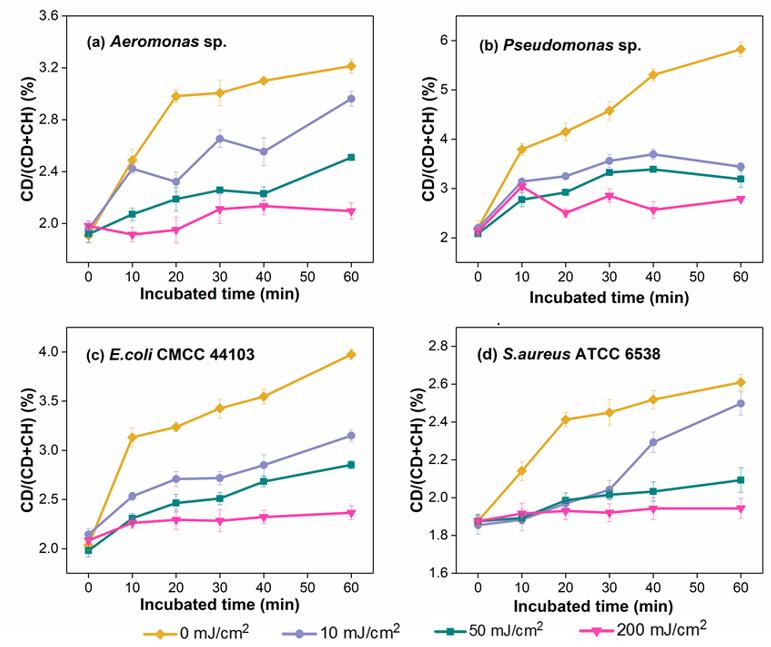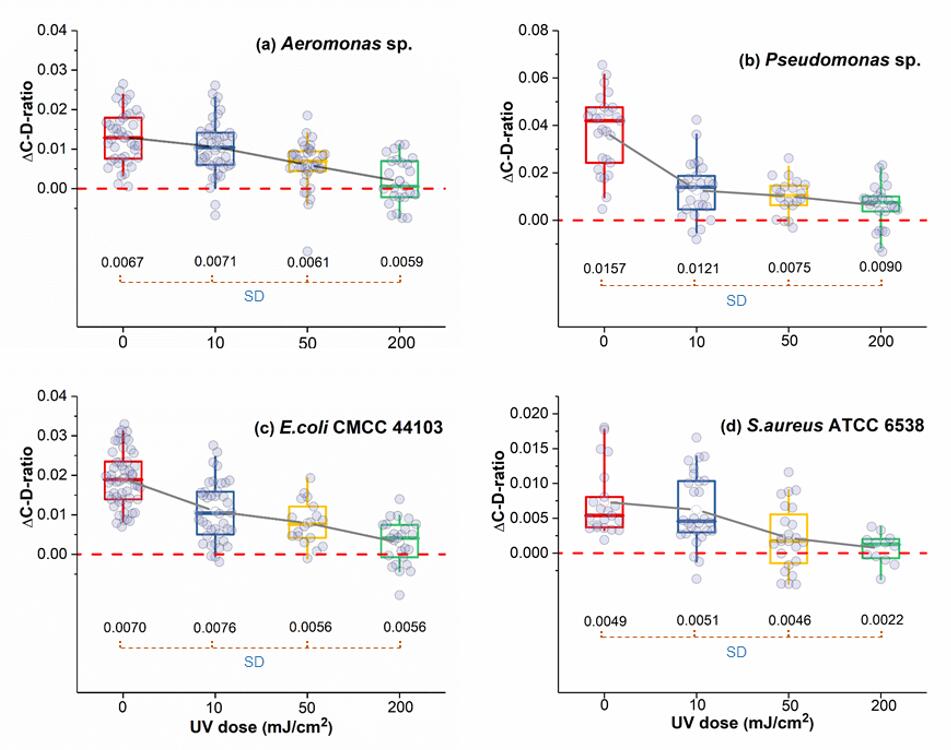Microbial safety of drinking water has always been a concern in world. At present, heterotrophic plate counting (HPC) method is applied as the standard method to detect bacteria and pathogenic microorganisms in drinking water in most countries and international organizations. However, bacteria may lose the culturability and enter the viable but non-culturable bacteria (VBNC) under harsh environment, like poor nutrition level, unfavorable pH, low temperature, osmotic pressure, disinfectant and other external environment conditions. Bacteria under VBNC state can still maintain a certain physiological and metabolic activity. And the VBNC bacteria could resuscitate under favorable conditions. If the VBNC bacteria present in drinking water, the culture-based method would underestimate the number of viable bacteria, leading to misjudge the microbial safety of water quality.
As an emerging technology, ultraviolet (UV) disinfection has been widely applied in small drinking water treatment plants (DWTPs), as well as reclaimed and waste water treatment plants. Some advantages of UV disinfection include cost-effectiveness, an absence of treatment by-products, and high sterilization efficiency against Cryptosporidium parvum oocysts and Giardia lamblia cysts. Increasing research on UV irradiation has revealed that this approach can also induce a VBNC state. UV irradiation induced a VBNC state in E. coli and P. aeruginosa. Now days, researches on VBNC bacteria are mostly focused on induction conditions, resuscitation environment and infectivity. The physiological activity characterization of VBNC state bacteria, especially single cell activity characterization, lacks detailed research. In addition, most studies on VBNC bacteria have focused on model or indicator strains rather than on environmental bacteria.
In this work, two common opportunistic pathogens isolated from an aquatic environment, Aeromonas sp. and Pseudomonas sp., and two model strains Gram-negative E. coli CMCC 44103 and Gram-positive S. aureus ATCC 6538 were induced into VBNC state by UV irradiation. Two methods, i.e. CTC-FCM and D2O-labeled Raman Spectroscopy, were conducted in assessing the viability/activity of the VBNC bacteria. The results showed that at each UV dose (0-200 mJ / cm2), the respiratory activity detected by CTC-FCM remained at a high level, and there was no significant dose-response relationship between respiratory activity and UV dose. As long as the cells are alive, this essential activity of bacteria with different damaged level and degree of dormancy should not be as significantly different as the overall metabolic activity. Thus CTC-FCM method is suitable to detect the activities essential for keeping bacteria alive such as respiration. While, significant correlation was discovered between UV doses and the activities detected by D2O-labeled Raman method. As we know, H2O is widely involved in cellular metabolic activities in direct or indirect ways, such as synthesis and utilization of organic matter. Considering that, the D2O-labeled Raman method is suitable for determining the overall metabolic activity (including essential viability) of important physiological and biochemical indicators of cells. On the hand, we obtained the quantitative activity of single cells and the heterogeneously metabolic activity distribution. This result makes sense for optimizing the sterilization process. A more economical and safer disinfection dose could be determined based on that. Last, most studies are focused on model strains, but our results indicated that not only model but also environmental strains exhibited different resistance to stress. For example, Aeromonas sp. was more sensitive than E. coli to UV disinfection in terms of culturability, but it remained higher metabolic activity. This result has certain guiding significance for the practical application of UV disinfection.
The above mentioned results has been published at Environment International. PhD student Lizheng Guo is the first author and Professor Xin Yu and Shenghua Zhang are the corresponding author. This study was supported by the K.C. Wong Education Foundation, the Natural Science Foundation of China (grant nos. 51478450, 51678551, 51678552), the Science and Technology Project of Fujian Province (grant no. 2016Y0082), the Science and Technology Project of Xiamen (grant no. 3502Z20162003, 3502Z20171003), the National Key Research and Development Program of China-International Collaborative Project from the Ministry of Science and Technology (grant no. 2017YFE0107300), and the Young Talent Project of the Institute of Urban Environment CAS (grant no. IUEQN 201505).


Figure 1. Average respiration intensity of individual cells under various UV doses for the four tested bacterial strains.

Figure 2. Temporal dynamics of C-D ratios of the four bacterial strains with increasing UV dose. Each point represents the C-D ratio for 20 cells with three replicates.

Figure 3. The ΔC-D ratio of the four strains incubated for 1 hour in D2O-containing medium after treatment with different UV doses.